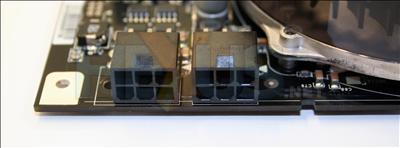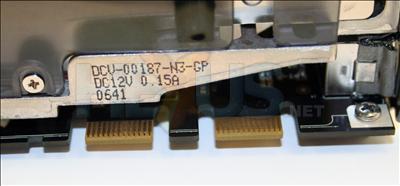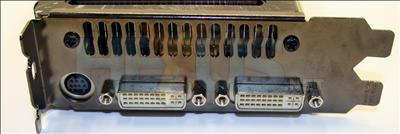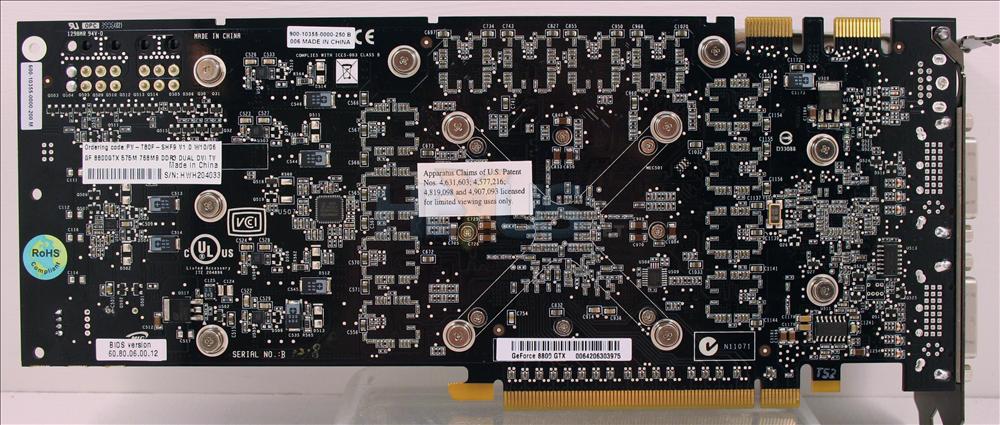Appearance and thoughts
Before even getting the XFX into your PC, the first thing you will notice is just how close it is in size to an elephant. Well, at least more so than the 8800 GTS shown here. It's 10.5in long, which is the kind of board size most boys would be proud of. But it could be a problem for some midi tower chassis which have a drive cage near the PCI Express 16x slots.
Never mind the quality - feel the width. The GeForce 8800 GTX is a chunky beast. But Nvidia learnt its lesson way back with the GeForce FX 5800 Ultra, and the XFX isn't much noisier than the previous generation, despite the stellar clocks of some components.
Perhaps one of the most controversial aspects of the GeForce 8800 GTX prior to its launch was how power hungry it was likely to be. The rumours were true - it does require two PCI Express power connections per card, so you will need four for SLI. However, we found that whilst the card might require 225W on its own at peak, in practice it only uses 140W for any extended period of heavy usage. You might want a 700W power supply to be safe with SLI, but for a single card any decent PSU capable of 500W or better should be sufficient.
There are two SLI connectors as standard, so you can daisy-chain more than two cards. You can use either for a two-card SLI setup, though.
The G80 can move plenty of air through the venting on its extra backplane. We found the sink itself did get quite hot, but the cooling was adequate to keep things under control. We didn't experience any temperature-related instability whatsoever during testing.
And here you have the rear of the board. It's a PCB with some transistors on it, if you were wondering. Note the RoHS certification sticker, there to prove that Nvidia is conforming to environmental regulations regarding the use of hazardous substances in electronics manufacturing.















